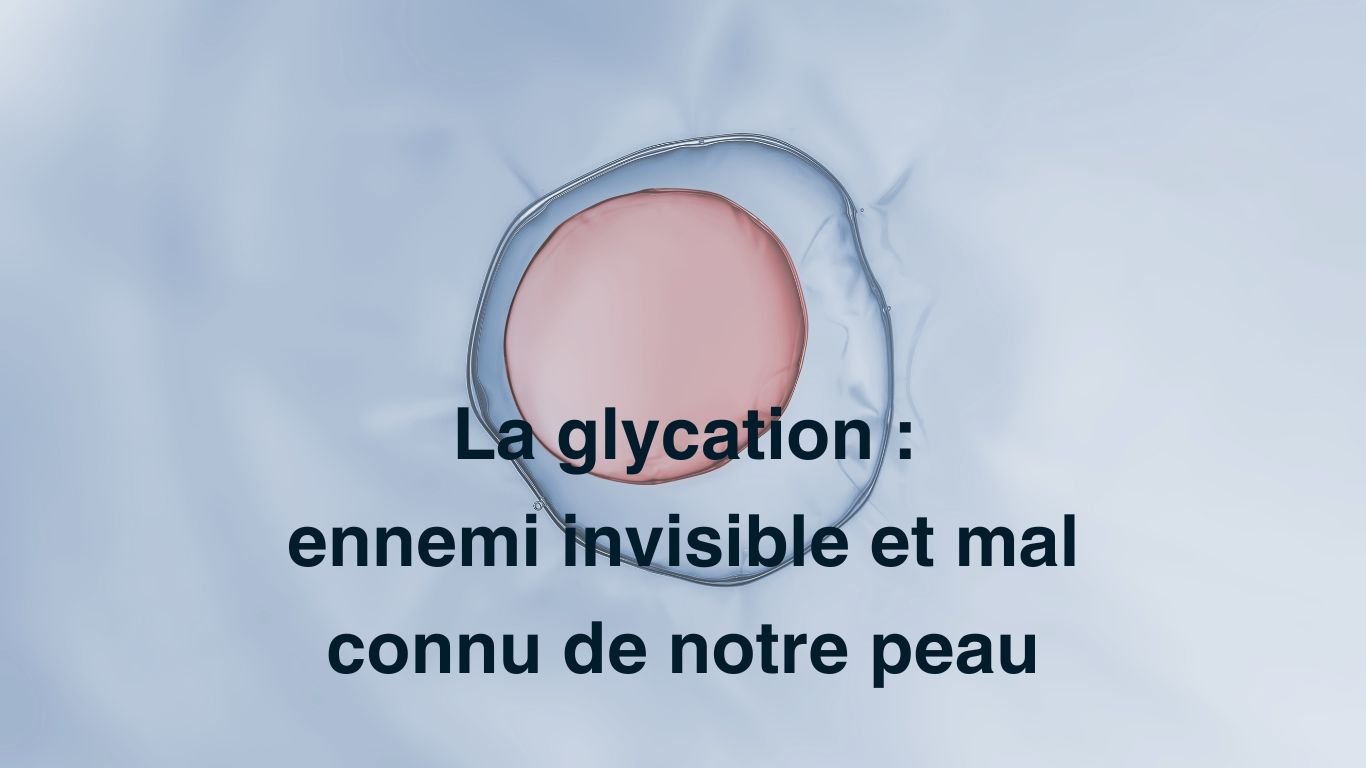If botulinum toxin injections have long been the prerogative of celebrities, for almost two decades they have become a solution accessible to almost everyone to overcome fine lines and wrinkles.
However, this approach is not without risk.
Partial paralysis of the face over a more or less long term, persistent pain, anaphylactic reaction... In addition to the skin trauma of the injection, there is that of this substance produced by the bacteria clostridium botulinum.
However, it seems difficult to find such effectiveness in supporting aging, hence the choice that many make to continue to use this type of procedure.
What if there was a less invasive approach, more respectful of your health in the long term, with astonishing effectiveness and exceptional comfort?
This is the problem that many nutricosmetic brands such as MyPureSkin are addressing to offer answers of sometimes unprecedented relevance, such as the food supplement MyCollagenLift.
The secret of their success? The use of active ingredients acting from the inside throughout your body and whose properties directly meet the specifications of aging skin.
Among these, the star of cures has made a name for itself, as well known as that of the much appreciated bacterial toxin: it is called “hyaluronic acid”.
 Botulinum toxin: why do we take it?
Botulinum toxin: why do we take it?
If botulinum toxin has been so successful until now, it is because it has offered results of indisputable effectiveness from the very beginning of its use.
Botulinum toxin: freezing the muscles to limit movements
It is first of all within the framework of conventional medicine with therapeutic aims that the effects of this molecule are studied.
The bacterium clostridium botulinum being the subject of numerous studies during the 19th century, it is to the professor of the Belgian Academy of Medicine Van Ermengen that we owe the discovery in 1897 of the cause of botulism: the toxin botulinum.
We then had to wait nearly 50 years for the English pharmacologist Arnold Burgen to demonstrate the mechanisms (taking place at the neuromuscular junction) which induce the blocking of the signal sent to the muscles to ensure motor skills.
From botulinum toxin to “botox”: the therapeutic beginnings of a solution that has become aesthetic
It was from the 1970s that the first treatments based on botulinum toxin were developed for therapeutic use in humans.
From its beginnings, this approach has met with great success to the point that it is used to address numerous muscular disorders, including in children aged 2 and over, as shown by the systematic resolution of problems of strabismus, blepharospasm or even facial hemipasm.
The trend is becoming more and more evident and the standardization of the packaging of botulinum toxin for therapeutic uses allows safe and simple use by practitioners, as shown by the entry into common language of the term “botox” (commercial name filed in 1993 by Allergan laboratories).
An increasingly aesthetic use
Based on the observation that many facial wrinkles are the result of repeated muscular contraction generated by the expressions adopted by the face, some practitioners ask themselves the question that would propel botulinum toxin to the rank of solution to support aging: “can can we reduce the frequency and intensity of facial contractions?”
It was in the 2000s that the way opened up for the implementation of an actionable aesthetic solution, targeting expression lines.
Increasing marketing authorizations, numerous Swiss, French (and European in general) laboratories are offering products to locally and quickly reduce certain skin signs of aging.
So-called “frown”, “crow's feet” or even “jugal” wrinkles are all skin problems that aesthetic medicine solutions based on botulinum toxin can now be treated.
Undeniable effectiveness... but limited?
Invasive, uncomfortable or even risky: the terms sometimes used to describe botulinum toxin injections are not always reassuring.
The very principle of the injection already poses two problems which can prove crippling for people seeking to combat the signs of aging:
- The risks of infection inherent in inserting a needle into the skin, when the tools and the environment are not sterile;
- The discomfort, even pain, caused by the procedure.
Fortunately, the risks of allergies are most often excluded from this list, to the extent that preventive work is generally carried out by the practitioner before the procedure to avoid any surprises in this regard.
Likewise, the risk of infection is normally minimized since the injection is carried out by a healthcare professional whose practice is proven over years of training and experience.
However, it is above all the scope of the intervention which makes this procedure an imperfect solution because beyond the quality of the results, it must be kept in mind that:
- The only benefit of botulinum toxin is that it limits the degrees of freedom of the facial muscles to prevent the appearance of fine lines and wrinkles (which means that this solution does not promote your skin health in any way);
- Botulinum toxin injections are local treatment only (which means that it is necessary to repeat the operation on each of the areas for which you wish to reduce your wrinkles, thereby increasing the discomfort and duration of the procedure ).
From “fast and effective”, the key arguments for talking about botulinum toxin injections have evolved to become more and more “superficial and limited”.
Hyaluronic acid: a much more appreciable alternative
The corollary of the properties of botulinum toxin is directly linked to the main reasons for using nutrition solutions incorporating active ingredients such as hyaluronic acid.
This molecule indeed meets the specifications of its bacterial counterpart without involving the risks and discomfort decried by detractors of “botox”.
A molecule naturally present in your body
The first argument in favor of hyaluronic acid lies in the role it plays in your body.
Produced naturally by certain cells in your dermis (fibroblasts), hyaluronic acid is one of the main ingredients of the ECM (ExtraCellular Matrix) that composes it.
In an article recently published on our blog , we explain in detail the importance of ECM and its constituents for the health of your dermis. We also remind you of the role they play in the appearance of your skin.
What you need to remember pretty well sums up the qualities that make food supplements to support aging solutions that perfectly address the shortcomings of botulinum toxin.
To understand this, let's briefly look at the effects of hyaluronic acid.
Hyaluronic acid: moisturizing molecule, synergistic vessel
Three key elements allow us to understand the evidence that the choice of hyaluronic acid constitutes:
- The hydration function that this molecule provides;
- The exacerbation of its properties when it enters into synergy with other active ingredients (also present naturally in your skin, such as collagen);
- The role of molecular transporter that hyaluronic acid can play.
If hyaluronic acid is today recognized as a very effective molecule for hydrating the skin (since it is also possible to use it as an injection and as a cream), it is much less highlighted for its two other properties.
However, it is precisely these two characteristics that make it an essential choice for the most effective nutricosmetics on the market: those allowing to “replace” in a certain way botulinum toxin injections, such as MyCollagenLift.
The hyaluronic acid – collagen synergy: when human genius enhances your skin mechanisms
The ECM is the environment in which the cells of your dermis are bathed. This environment is of capital importance both for the health of your skin and for its natural beauty since it is what allows it to maintain its firmness, elasticity and level of hydration. This MEC is made up of three main elements:
- Collagen (macro protein allowing skin firmness);
- Elastin (protein ensuring skin elasticity);
- Hyaluronic acid (a molecule capable of carrying, storing, moving and delivering nearly 1000 times its weight in water).
In a very recent study published in 2021 by the team of researcher Anca Maria Juncan ¹ , we find confirmation of discoveries made several years ago.
Indeed, it is through a rigorous and systematic clinical study that this member of the scientific community was able to highlight the following two key points:
- One of the major roles of hyaluronic acid is to produce the necessary ECM viscosity to allow collagen and elastin to develop properly;
- Hyaluronic acid is essential for the formation and maintenance of collagen in that it serves as a vessel for hydration factor, thus delivering “on demand” to fibroblasts (collagen-producing cells) with the water required to ensure their metabolic reactions;
To the extent that collagen and elastin are the two “ingredients” naturally produced and used by your skin to maintain its mechanical properties (the very ones that make your skin “young” to the naked eye), nutricosmetic synergies combining hyaluronic acid with collagen offer an alternative to botulinum toxin injections which reveals:
- As efficient as it is comfortable;
- Respectful of the health of your skin in the short and long term;
- Can be used throughout your entire body to allow you to benefit from many other health/beauty benefits.
MyCollagenLift: crystallization of your skin care hopes in a unique cosmeceutical
It is thanks to a fine mastery of the mechanisms linking hyaluronic acid and collagen that the collaborators of the MyPureSkin laboratories have been able to sublimate the results offered by the anti-aging nutricosmetic industry.
By bringing into the world an exclusive formula composed of 100% natural ingredients, MyPureSkin puts MyCollagenLift in your hands, a non-invasive cosmeceutical solution capable of being included in your daily beauty routine to allow you to take care of your skin.
To achieve this, MyCollagenLift optimizes the properties of ingredients such as:
- Very organic marine collagen bio peptides available;
- Hyaluronic acid to help you achieve a good level of hydration;
- Wheat oil ceramides to complete this hydration-maintaining effort for your skin;
- Vitamin C from acerola fruit helping to protect your cells from oxidative stress;
- Vitamin E also acting as an antioxidant;
- Organic silicon used to structure your skin while increasing your defenses against the harmful effect of free electrons;
- SOD to complete this arsenal of antioxidant defenses.
Ready to make a choice that will change the life of your skin? Start a first 3-month treatment with MyCollagenLift to benefit from visible effects from 4 weeks!
- Study carried out in 2021 by the team of researcher Anca Maria Juncan on the effects of the synergies at work in the combinations of hyaluronic acid, collagens and other active ingredients used by certain cosmeceutical products: https://www .ncbi.nlm.nih.gov/pmc/articles/PMC8347214/





Share:
Skin microbiome: life in the skin
MYCOLLAGENLIFT AWARDED AT THE 2022/2023 BEAUTY VICTORY